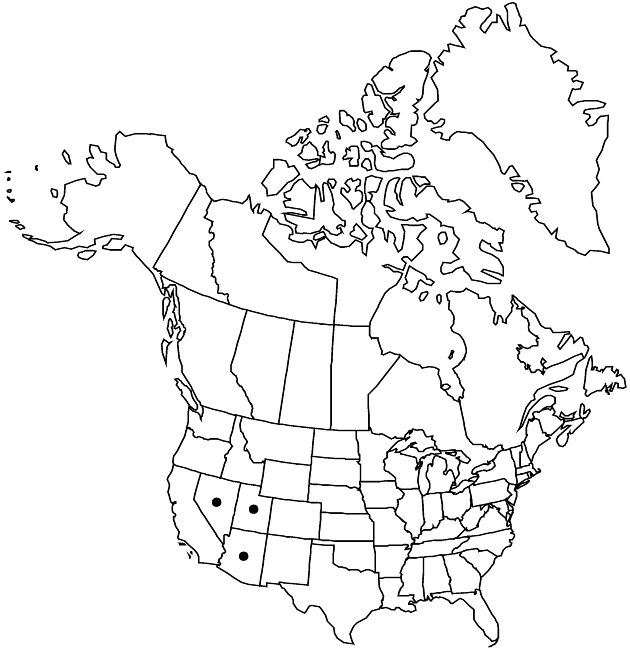Gaillardia arizonica
in A. Gray et al., Syn. Fl. N. Amer. 1(2): 353. 1884.
Annuals, 5–40 cm. Leaves mostly basal, mostly restricted to proximal 1/5 (–1/3+); petiolar bases 0–2+ cm; blades oblanceolate, obovate, or spatulate, 3–6 (–9) cm × 5–25 mm, mostly raggedly pinnately lobed, sometimes entire, sparsely to densely villous with jointed hairs. Peduncles 5–35 cm. Phyllaries 14–20, lanceolate to lance-attenuate, 6–12+ mm, ciliate with jointed hairs. Receptacular setae 0 or 0.3–0.8 mm. Ray-florets 10–13; corollas yellow to orange, 17–22 mm. Disc-florets 40–100+; corollas yellow, tubes 0.6–0.8 mm, throats campanulate, 2.8–3 mm, lobes deltate, 0.5–0.7 mm, jointed hairs to 0.3 mm. Cypselae obpyramidal, 2 mm, hairs 2 mm, inserted at bases and on angles and faces; pappi of 8–10 obovate or ovate to lanceolate, aristate or muticous scales 2–5 mm (if aristate, scarious bases 2–3.5 × 1.3–1.6 mm). 2n = 34.
Phenology: Flowering Mar–May.
Habitat: Sandy desert washes and fans
Elevation: 300–1200 m
Distribution

Ariz., Nev., Utah, Mexico (Sonora)
Discussion
Selected References
None.